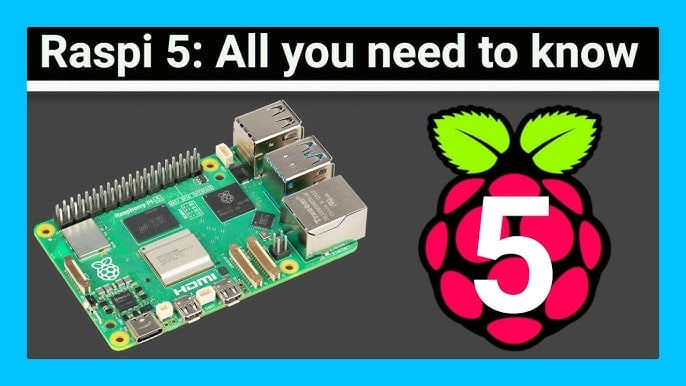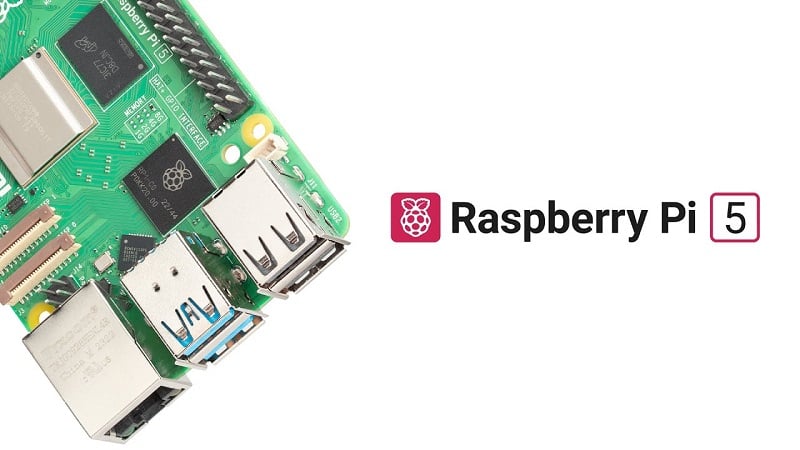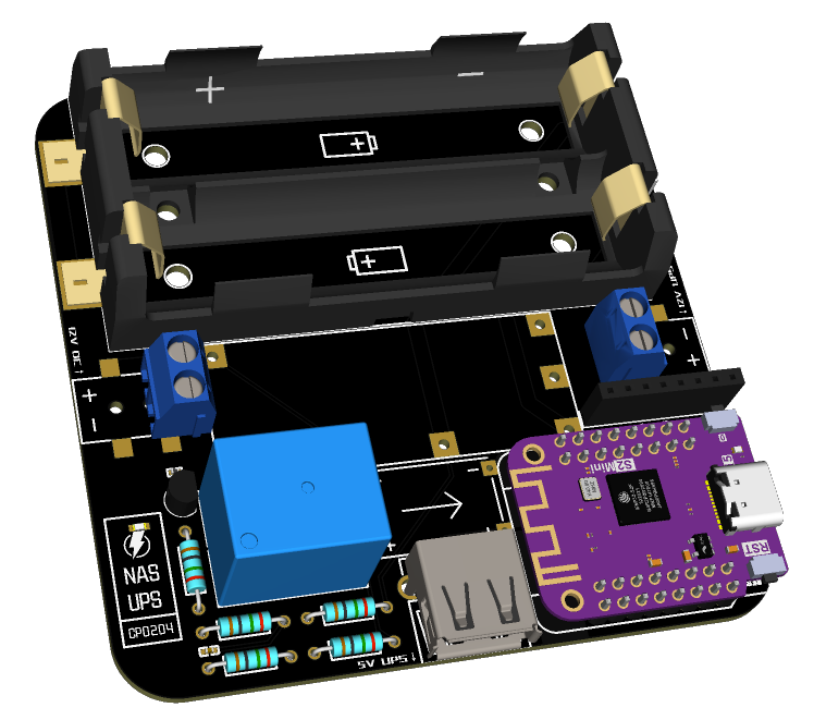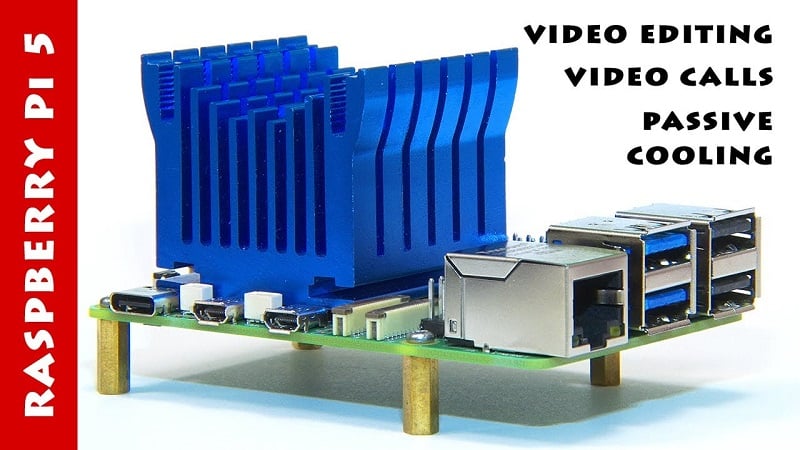Featured Posts
Raspberry Pi 5: EVERYTHING You Need to Know
John Guan - Oct 20, 2023
Since its inception, the Raspberry Pi has been a torchbearer for affordable and accessible computing. The journey that began with the release of the original Raspberry Pi Model A in 2012 has been nothing short of extraordinary. With each new iteration, the Raspberry Pi has pushed the boundaries of what a credit card-sized computer can achieve. Now, in 2023, the tech world is buzzing with anticipation for the latest offering: the Raspberry Pi 5.
The Raspberry Pi has become a household name among tech enthusiasts, educators, and DIY hobbyists. Its allure lies in its affordability, versatility, and strong community support. With the Raspberry Pi 5, there’s a fresh wave of excitement. This fifth-generation model promises to bring even more power, capability, and innovation to the table, all while retaining the beloved characteristics that have made the Raspberry Pi a sensation.
In this blog, we’ll embark on a comprehensive journey through the world of the Raspberry Pi 5. We’ll explore its predecessors and the significant milestones they represent in the world of computing. We’ll delve into how the Raspberry Pi has impacted the tech world, changing the way we think about affordable computing solutions. By the end, you’ll have a clear understanding of the Raspberry Pi’s evolution and why the Raspberry Pi 5 is generating so much excitement.

Part 1: A Brief History of Raspberry Pi
The Raspberry Pi’s journey began with the Model A and Model B in February 2012. These early models featured a Broadcom BCM2835 system-on-chip with an ARM1176JZF-S CPU and 256MB of RAM. Although modest by today’s standards, they were groundbreaking for their time, and their affordability (around $25) made them accessible to a broad audience.
Over the years, the Raspberry Pi Foundation released a series of improved models, each building on the capabilities of the last. The Raspberry Pi 2, for example, introduced a quad-core CPU and 1GB of RAM. The Raspberry Pi 3, released in 2016, featured built-in Wi-Fi and Bluetooth. The Raspberry Pi 4, in 2019, marked a significant leap, offering up to 8GB of RAM, USB 3.0 ports, dual HDMI outputs, and gigabit Ethernet. Each of these models found its niche in various applications, from educational purposes to media centers and home automation.
1. Milestones in the Raspberry Pi’s journey
The journey of the Raspberry Pi has been marked by several milestones. It’s found itself not only in the hands of tech enthusiasts but also in educational institutions and even in space. Here are a few key milestones:
Educational Impact: The Raspberry Pi was initially designed to promote computer science education. It has been used in schools worldwide to teach programming, robotics, and electronics. It’s a tool that has ignited a passion for learning in countless students.
Astro Pi: The Raspberry Pi Foundation collaborated with the European Space Agency to send Raspberry Pi computers to the International Space Station. Students have run experiments on these devices, opening up opportunities for space-based coding and scientific exploration.
Raspberry Pi Compute Module: This variant of the Raspberry Pi is designed for industrial and commercial use. It’s used in various applications, including digital signage, smart appliances, and robotics.
Raspberry Pi Pico: In 2021, the Raspberry Pi Foundation introduced the Raspberry Pi Pico, a microcontroller development board. It marked the foundation’s foray into the world of microcontrollers and opened new possibilities for embedded systems.
2. The impact of Raspberry Pi on the tech world
The Raspberry Pi has had a profound impact on the tech world. It has democratized computing, making it accessible to a wide range of users, irrespective of their financial resources. Here are some of the ways it has influenced the tech landscape:
Affordable Computing: The Raspberry Pi’s low cost has made computing accessible to people who might not have been able to afford a traditional desktop or laptop. This has been a game-changer, especially in regions with limited access to technology.
Learning and Education: The Raspberry Pi has been instrumental in introducing programming and computer science to a new generation of students. It provides a hands-on learning experience that goes beyond theory, allowing students to experiment and create.
DIY and Maker Projects: It has become a staple in the maker and DIY communities. Enthusiasts have used Raspberry Pi devices to build everything from retro gaming consoles to home automation systems.
IoT and Embedded Systems: The Raspberry Pi has played a significant role in the rise of the Internet of Things (IoT) and embedded systems. Its versatility and affordability have made it an attractive choice for various IoT applications.
Server and Network Tools: Some users have harnessed the Raspberry Pi’s capabilities to set up servers, network-attached storage (NAS) devices, and even home media centers.
Part 2. Raspberry Pi 5: The Next Generation
The tech world was set abuzz when the Raspberry Pi Foundation officially unveiled the Raspberry Pi 5. This announcement marked the fifth installment in the highly successful line of Raspberry Pi single-board computers. The Raspberry Pi series has come to symbolize accessible and versatile computing, and the fifth-generation model promises to take these qualities to the next level.

1. Key features and improvements over previous models
The Raspberry Pi 5 is expected to bring several key features and improvements, building on the successes of its predecessors:
Enhanced Performance: The processor is set to receive a significant upgrade, ensuring faster and more efficient performance. This will make the Raspberry Pi 5 suitable for an even wider range of applications, from basic computing tasks to more demanding workloads.
Increased RAM: The new model is anticipated to offer more RAM options, allowing users to select the configuration that best suits their needs. This not only improves multitasking but also makes it more versatile for various use cases.
Enhanced Connectivity: Expect the Raspberry Pi 5 to keep pace with the latest connectivity standards. Faster Wi-Fi, Bluetooth, and Ethernet capabilities will ensure seamless connectivity, whether you’re using it for networking, IoT projects, or media streaming.
Advanced Ports and GPIO Expansion: The Raspberry Pi 5 is likely to maintain and expand on the variety of ports, making it compatible with a wide array of peripherals. GPIO expansion will continue to be a feature, supporting the creation of custom projects and interfaces.
Sleek Design: With each generation, Raspberry Pi boards have become more compact and stylish. The Raspberry Pi 5 is expected to retain this trend, enhancing both functionality and aesthetics.
Part 3. Hardware Specifications of Raspberry Pi 5
- Broadcom BCM2712 2.4GHz quad-core 64-bit Arm Cortex-A76 CPU, with cryptography extensions, 512KB per-core L2 caches and a 2MB shared L3 cache
- VideoCore VII GPU, supporting OpenGL ES 3.1, Vulkan 1.2
- Dual 4Kp60 HDMI® display output with HDR support
- 4Kp60 HEVC decoder
- LPDDR4X-4267 SDRAM (4GB and 8GB SKUs available at launch)
- Dual-band 802.11ac Wi-Fi®
- Bluetooth 5.0 / Bluetooth Low Energy (BLE)
- microSD card slot, with support for high-speed SDR104 mode
- 2 × USB 3.0 ports, supporting simultaneous 5Gbps operation
- 2 × USB 2.0 ports
- Gigabit Ethernet, with PoE+ support (requires separate PoE+ HAT)
- 2 × 4-lane MIPI camera/display transceivers
- PCIe 2.0 x1 interface for fast peripherals (requires separate M.2 HAT or other adapter)
- 5V/5A DC power via USB-C, with Power Delivery support
- Raspberry Pi standard 40-pin header
- Real-time clock (RTC), powered from external battery
- Power button
Part 4. Raspberry Pi 5 Operating Systems and Software
1. Compatibility with popular operating systems
Raspberry Pi has a rich ecosystem of operating systems. The Raspberry Pi 5 is expected to be compatible with a wide range of operating systems, including the official Raspberry Pi OS (formerly Raspbian) and various Linux distributions. This flexibility ensures that users can choose the operating system that best suits their needs, whether it’s for general-purpose computing or specialized applications.
2. Software ecosystem and community support
The Raspberry Pi community is a thriving and passionate group of users and developers. With the release of the Raspberry Pi 5, this community is expected to continue its strong support, offering a wealth of tutorials, projects, and software applications. This support network is invaluable for both beginners and experienced users, fostering a collaborative and innovative environment.
3. New software features and improvements
While specifics about new software features are not confirmed, it’s reasonable to expect enhancements in software to match the hardware upgrades. Improved performance and connectivity capabilities will open doors for more sophisticated software applications, whether it’s in the realm of artificial intelligence, IoT, or home automation.
Part 5. Raspberry Pi 5 Use Cases and Applications
1. Home automation and IoT projects
The Raspberry Pi 5 is tailor-made for home automation and Internet of Things (IoT) enthusiasts. Its improved processing power and connectivity options make it ideal for creating smart home systems. You can use it to control lights, appliances, and security systems, all while collecting and analyzing data from sensors. Whether you want to build a home weather station or automate your coffee maker, the Raspberry Pi 5 provides the necessary horsepower and versatility.
2. DIY media centers and retro gaming
For entertainment buffs and gaming aficionados, the Raspberry Pi 5 shines as a cost-effective media center and retro gaming hub. With its beefed-up hardware, it can handle 4K video playback with ease. You can set up Kodi or Plex to stream content or build your retro gaming console using emulators for classic systems like NES, SNES, or Sega Genesis. The result is an entertainment powerhouse in a compact form factor.
3. Educational applications in schools and maker spaces
Education has always been at the core of the Raspberry Pi Foundation’s mission. The Raspberry Pi 5 continues to serve as an invaluable tool in classrooms and maker spaces. It’s a versatile platform for teaching programming, electronics, and robotics. Its enhanced performance ensures smooth operation, even for more complex educational projects. Whether students are learning to code, building robots, or conducting experiments, the Raspberry Pi 5 is a reliable companion.
4. Commercial and industrial use cases
The Raspberry Pi 5 isn’t just for hobbyists and educators; it’s also making its mark in the commercial and industrial sectors. Its compact size, reliability, and cost-effectiveness make it a preferred choice for various applications. From digital signage and point-of-sale systems to industrial automation and data logging, the Raspberry Pi 5’s versatility extends to a wide range of commercial and industrial use cases.
Part 6. Raspberry Pi 5 Performance and Benchmarks
1. Comparative performance with previous Raspberry Pi models
The Raspberry Pi 5 represents a significant leap in performance compared to its predecessors. While specific details about its processor and RAM configurations are yet to be confirmed, it is expected to outperform previous models, making it well-suited for more demanding tasks. Whether you’re running multiple applications simultaneously or engaging in heavy computations, the Raspberry Pi 5 ensures a smoother and more responsive experience.
2. Real-world benchmarks and speed tests
As with any technological advancement, real-world performance matters more than theoretical specs. While the Raspberry Pi 5 is expected to offer a substantial performance boost, it will be exciting to see how it performs in real-world benchmarks and speed tests. These tests will provide a practical understanding of its capabilities and how they translate into everyday use.
3. Overclocking and cooling options
For power users and enthusiasts, overclocking is a method to push the Raspberry Pi 5’s performance further. However, overclocking can generate extra heat, so effective cooling solutions will be essential to maintain optimal performance. Various cooling options, from heat sinks to active cooling systems, will become valuable accessories to maximize the Raspberry Pi 5’s capabilities.
Part 7. Accessories and Add-Ons of Raspberry Pi 5
1. Compatible cases and cooling solutions
To protect your Raspberry Pi 5 and maintain its performance, investing in a compatible case is crucial. A well-designed case not only provides physical protection but also assists in efficient heat dissipation. The market is expected to offer a variety of cases, ranging from sleek and minimalistic to rugged and durable options. Additionally, cooling solutions, such as heat sinks and fans, will help keep the Raspberry Pi 5 at an optimal operating temperature during heavy workloads.
2. Power supply recommendations
A reliable power supply is the backbone of any Raspberry Pi setup. A stable power source ensures that the SBC operates without issues. It’s essential to choose a power supply that meets the Raspberry Pi 5’s power requirements to prevent under-voltage warnings and system instability. Many reputable power supply options are available, with varying output capacities and features to suit different use cases.
3. Accessories for specific projects (e.g., camera module, displays)
The Raspberry Pi 5’s compatibility with a range of accessories allows users to customize it for specific projects. For those interested in photography or video applications, the official Raspberry Pi camera module offers high-quality image capture and is supported by a vast software ecosystem. Similarly, various displays, touchscreen monitors, and HATs (Hardware Attached on Top) are available to extend the functionality of the Raspberry Pi 5 for specific applications.
Conclusion:
The Raspberry Pi 5 has arrived, and it’s ushering in a new era of possibilities for tech enthusiasts, educators, and innovators. With enhanced performance, a versatile range of applications, and a thriving ecosystem of accessories, it cements its place as a versatile and affordable computing solution.
From home automation to industrial applications, the Raspberry Pi 5 empowers users to bring their ideas to life. As we explore its real-world performance and unleash its potential, the legacy of this single-board computer continues to inspire and drive innovation in the ever-expanding world of technology. The future is brighter than ever for the Raspberry Pi community.


